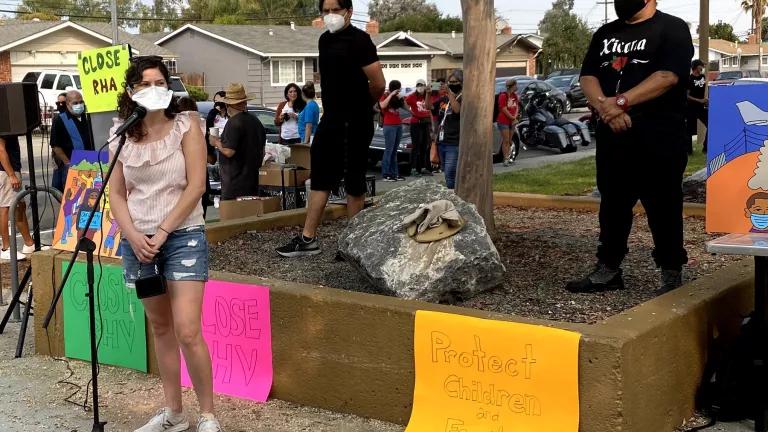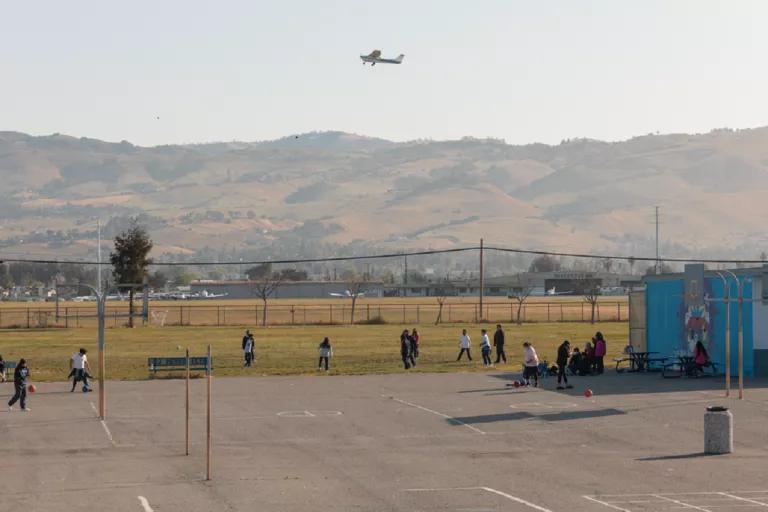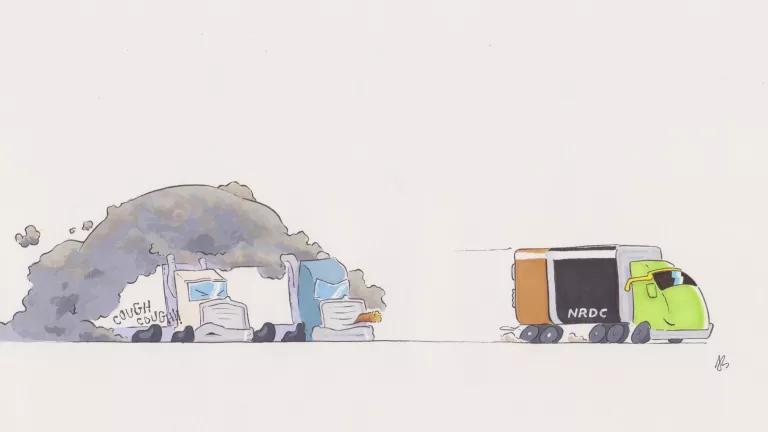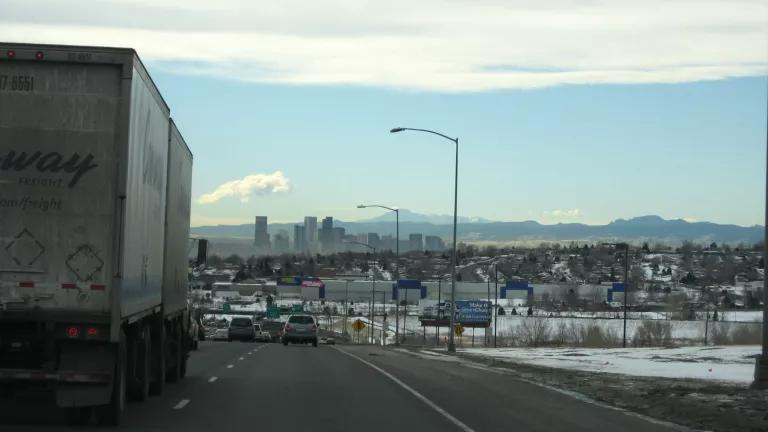The Biden Administration Must Act on Leaded Aviation Fuel
Federal action on this little-known public health and environmental justice crisis is long overdue.

Maricela Lechuga speaks at a community rally
“Instead of a rose garden, like the white neighborhood has, we got a lead garden,” testified Maricela Lechuga, an attorney and community leader from East San José fighting to protect her neighborhood from lead-based aviation fuel used at the nearby Reid-Hillview airport.
Last week, the House Subcommittee on Environment held a hearing on the devastating health harms posed by leaded aviation fuel. Though lead-based fuel was removed from cars and commercial jets decades ago, small piston-engine aircraft are still allowed to use it—making up the single largest source of U.S. airborne lead emissions. Low-income communities and communities of color are more likely to live near general aviation airports and to bear the burden of these airports’ toxic impacts.
This little-known public health crisis affects millions of children across the country. As Dr. Bruce Lanphear, a board-certified physician and health expert, testified last week, there is no safe level of exposure to lead.
The Reid-Hillview airport in East San José is a stark example of just how high the stakes are. The airport, owned by Santa Clara County, is one of the highest lead-emitting airports in the country. It is also in a densely urban area: the surrounding 1.5-mile radius is home to 52,000 residents, 61% of whom are Latino. Last fall, a study linked the airport with dangerously high blood lead levels in children living nearby, finding the increase on par with that experienced in Flint, Michigan at the height of its drinking water crisis.

Reid-Hillview shares a fence line with Meyer Elementary School
After years of advocacy by community members, including Lechuga and the Close Reid-Hillview Now! Coalition, Santa Clara County agreed to take action and stopped the sale of leaded aviation fuel at the airport. But pilots who refuse to make the switch to an unleaded alternative can still self-fuel or refuel at other airports and continue to spread lead over the neighborhoods below.
The sure-fire way to eliminate lead pollution from these planes is to ban the fuel altogether. The EPA banned leaded gasoline for cars in 1996, and environmental groups first petitioned for a ban on its use in general aviation planes in 2006. Yet the federal government has been dragging its feet. Despite studying the issue for years, the EPA and FAA now claim they need more time to develop an alternative fuel—something some industry players are actively working against. But alternatives already exist, as witnesses from General Aviation Modifications, Inc. and Swift Fuels testified last week. A ban would spur additional competition and development.
Federal action on this crisis is long overdue. We cannot keep sacrificing the health and safety of children of color to industry pressure and agency bureaucracy. The EPA and FAA must listen to East San José residents and move quickly to issue a regulatory ban on leaded aviation fuel once and for all.



